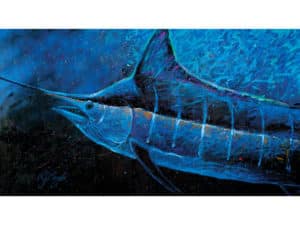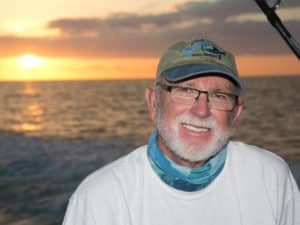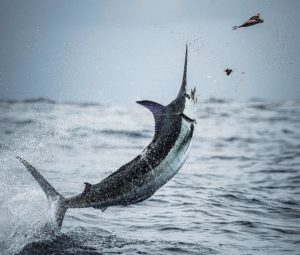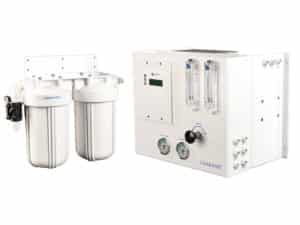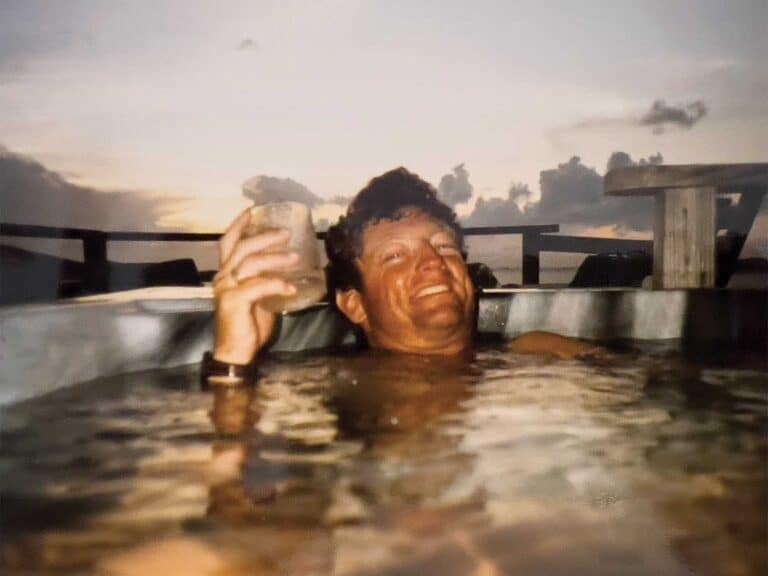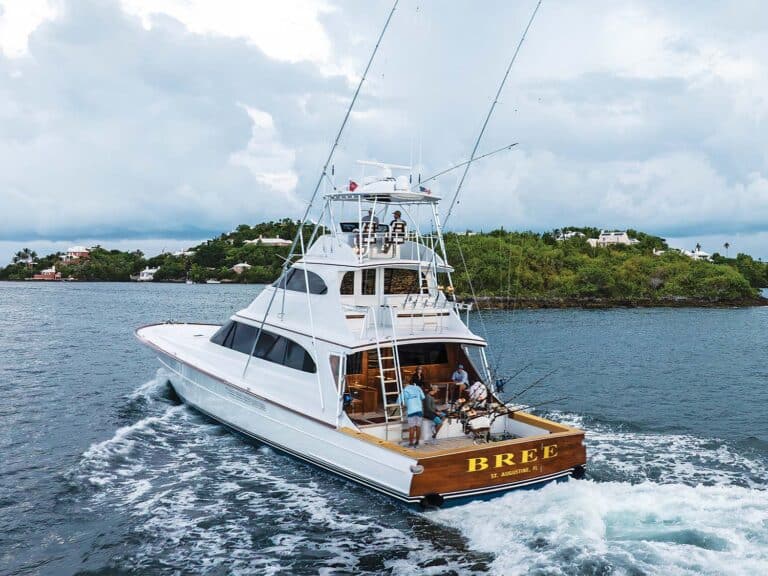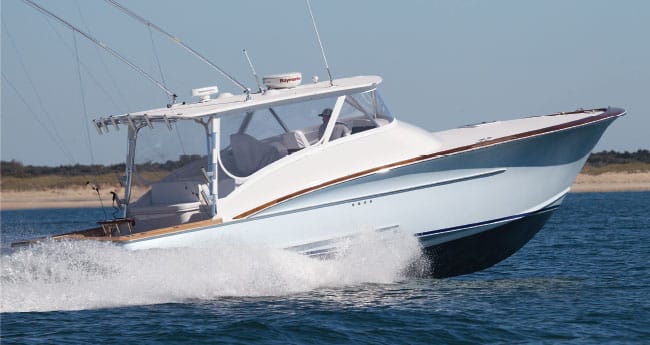
| |Marc Montocchio|
First and foremost, I want to go on the record and let everyone know that I am not a writer. I started my boating career as the son of a commercial snapper fisherman and built my own boat-washing empire at age 12, scrubbing charter boats in the Florida Keys. I later worked my way up from mate to captain, and now I run offshore fishing machines all over the world. I’m also a part-time boat broker, so I volunteered to do boat reviews for Marlin in order to get to ride on the latest, and possibly the greatest, boats currently splashed. I figured that this would give me a front-row seat to see all the great design and technology changes. So when the call came for me to do a review on the Winter 38, a builder and boat that I was not familiar with, I jumped on the opportunity without even asking about the details.
Once I was on the phone with the boat’s builder, Tim Winters, arranging the time and place of the sea trial, I soon found out that the boat in question was an express-style boat. I’ve run a few express boats over the years, and I’ve found them to have some major pros and cons — I’ve never really been a big fan. Then I found out that the boat came equipped with Volvo IPS600 pod drives, something else that comes with major pros and cons, in my opinion. The boat didn’t have a tower and probably didn’t even have a transom door. I felt like I was going to do a review on a tricked-out snapper rig.
As it turned out, this little Winter 38 blew away a lot of the preconceived notions I held about both express-style boats and those powered with pods.
Little Beauty
I’ve been fishing down south for the last 10 years, so I’d never seen a Winter boat before, and I’d not heard much about this builder. However, as soon as I walked up to the boat, I could tell what part of the world it came from. She has those distinct, beautiful Carolina lines that a lot of us fall in love with. I noticed immediately that this boat boasted an extremely high level of fit and fairing, with a very clean yacht finish. Even some of the big-name builders could not compare.
One of the boat’s owners, Jason Fletcher, greeted me at the dock as I admired the boat. As we talked about why the boat had no tower, and why they went with pod drives, a young man climbed out of the engine room. I figured he was the mate on the boat, but, to my surprise, he turned out to be the builder, Tim Winters.
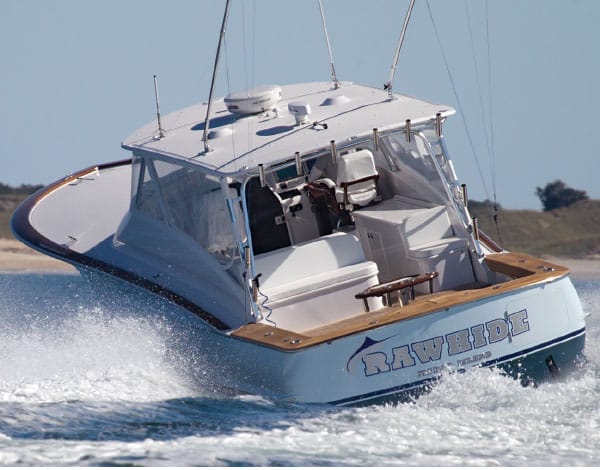
| |Marc Montocchio|
Winters started his boatbuilding career at Shearline Boatworks. During his time there, he was involved in the construction of more than 15 different boats before he struck out on his own to start his own shop. Working with Jesse Rhodes of Rhodes Yacht Design, he’s now built 10 Winter Custom Yachts boats, ranging from 16 to 62 feet, and currently has five under construction on the shop floor — including one for a very discriminating boat buyer and fly angler, Nick Smith, of Old Reliable fame.
Layout
The cockpit sports mezzanine-style seating with a stainless-steel-lined refrigerated built-in fish box, and it does have a transom door large enough to pull any big one through. As you walk forward into the helm area, there is a large L-shaped settee to port, with a copilot seat made by Release Marine just forward of that. A tackle center with a built-in barbecue grill sits on the starboard side. The helm sits all the way forward on the starboard side and boasts a Palm Beach-style helm pod with single-lever controls and another Release chair.

| |Courtesy Winter Custom Yachts|
Below
After a quick walk through, I stuck my head in the starboard aft lazarette hatch, and found that the bilges were as nicely faired as the topsides. All of the wiring and plumbing looked to be extremely well organized and easy to get at for replacement and/or maintenance. The engine room offered two different access points; you could either flip a switch that powered two actuators to lift the helm floor, or you could go in through a hatch just forward of center in the helm deck. I chose to take the hatch instead of lifting the floor. Once in the engine room, things got a little tight, but I could easily access all of the filters, and you could get to everything on the generator. I found it surprisingly easy for such a small boat — even without lifting the whole floor.
Next I ventured down below into the forward cabin. The head and shower combination lies to starboard, just behind the small galley. To port, there’s a double bunk with storage underneath, and two more bunks in a V-berth configuration with even more storage. To aft, under the aluminum ladder used as steps, was another bunk that also doubled as storage if needed. In all, four people could sleep comfortably in the air-conditioned cabin. The interior furnishings and cabinets were covered in solid cherry trim and cherry veneers, with a solid cherry-and-holly floor and soft-padded walls and headliner throughout. The quality and look made for a lush, big-boat feel — something you don’t often get in a small fishing boat.
Under Way
Just a few houses down the channel, the canal jogged to starboard, and it became immediately apparent why this boat does not come with a tower. The bridge ahead looked so low that I wondered if we were going to make it under, even without the tower. Fletcher said that this bridge had spooked the rest of the builders that he and his father spoke to, but Winters had no problem working around it. We passed under with only inches to spare.
Once at the inlet, with open water ahead, Fletcher looked to see if Winters and I were hanging on — I was seated in the port helm chair — before he pushed the throttles up. Even while seated, the acceleration threw me back into the seat. We went from idle speed to almost full speed in what felt like 12 seconds. We had to be up on a plane in less than three! I am not a race-boat guy, but it was the first time I’ve ever thought that a boat might have more power than it needed.
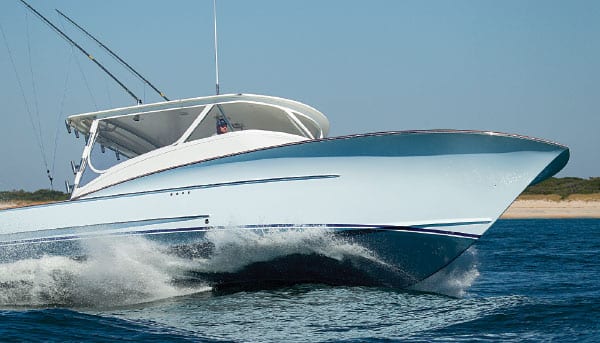
| |Marc Montocchio|
After we made it out into open water, it was my turn at the wheel. I did not take off as aggressively as Fletcher, so that I could see how the boat planed out if I were carrying kids or less stable passengers. I pushed up the throttles, and there was an immediate response — no lag, no delay; the boat was up and moving. I only experienced about two seconds of reduced visibility because of the bow rise that came with the tabs fully up. With tabs down, or pushing up the throttles faster, there was less than a second. This completely blew away any previous prejudices I’d held about express boats. I’ve always been concerned with the lack of visibility on most expresses, and Winter solved the problem beautifully.

| | |
Once up and running, I pulled the throttles back to where I felt comfortable with the ride, as I scanned the GPS and gauges; we were turning 2,800 rpm and clipping along comfortably at 28 knots while burning only 28 gallons per hour. With its 550 gallons of fuel, you could easily get a 500-mile range at that speed.
Steering was responsive at high speeds, but not so overly responsive that you might throw someone off in a quick turn. There was also no propeller blowout on a turn at any speed. I ran the boat in a few different directions to see how she handled the waves, and in all directions she felt very stable. Even though it wasn’t a rough day, the boat seemed to be very dry and comfortable. I did hit a few wakes, including our own, and she handled them well and kept us dry.
When I was done running around in circles, it was time to do a sport-fishing simulation. A little backing down and spinning is always my favorite part of running a boat. I’ve heard about the improvements that Volvo made in its pod handling since it introduced the pods a few years ago, but I really had no idea how impressive that improvement turned out. I will say that I have never been on a boat more responsive or faster in a spin — ever!
There are a couple of things that I think would make this really nice boat a bit better. I would like to see some type of moisture-elimination system in the engine room. I did not see any sign of corrosion, but I’m sure it’s coming over time, and with the amount of extra hardware and wiring that comes with the Volvo package, keeping the salt out is going to be important for the longevity of the systems. The only other change I would make: putting bigger drains under the cockpit hatches. Even though I didn’t get much water in the pit while backing, a little bit showed up in the bilge. In a real-world scenario, a good cockpit swamping might overtake the current drains.
In the end, Gary Fletcher and his son, Jason, got a very special boat that fit their needs exactly. Yes, they do a little snapper fishing with the station-keeping feature that comes with the Volvo system, but they also wanted a boat that gave them the range to make 170-mile (each way) marlin trips from their own backyard. They needed range and they had a low bridge to contend with. Winter Custom Yachts delivered on price and on time and took care of all of their needs, building a true custom boat from the bottom up. I believe we will be seeing a lot more cool boats from this young and talented boatbuilder.
